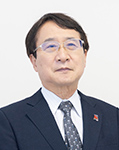Perspective of 3D printing in dentistry—Exploring the new horizon
Vol 7, Issue 1, 2023
VIEWS - 3815 (Abstract)
Abstract
The phrase “3D printing” is frequently used to illustrate a fabrication technique that constructs objects by sequentially adding layers. Additive manufacturing, commonly referred to as rapid prototyping or “solid free-form technology”, is a name that more appropriately reflects this method. As a result of the advancement of this technology, 3D objects are converted into 3D photos that are then precisely and perfectly reproduced as required. Using this technique, normal 2D systems are used to visualise 3D objects that are typically seen in radiology. From the perspectives of numerous dental disciplines, including orthodontics, endodontics, prosthodontics, and periodontics, 3D printing technology has been expanding its application in experimental, clinical, and educational sides of medicine and dentistry. It involves innovation and research, training, treatment modalities and education while utilising the swiftly advancing 3D printing technology. It is a promising clinical tool since it makes it possible to see how treatments are working. The use of 3D-printed models in educational programmes encourages students and trainees to practise their dental skills. The improvement of dental education, clinical treatment, and research could all be made possible by the use of 3D printing.
Keywords
Full Text:
PDFReferences
- Liaw CY, Guvendiren M. Current and emerging applications of 3D printing in medicine. Biofabrication 2017; 9(2). doi: 10.1088/1758-5090/aa7279.
- Rayna T, Striukova L. From rapid prototyping to home fabrication: How 3D printing is changing business model innovation. Technological Forecasting and Social Change 2016; 102: 214–224. doi: 10.1016/j.techfore.2015.07.023.
- Hixon KR, Melvin AM, Lin Ay, et al. Cryogel scaffolds from patient-specific 3D-printed molds for personalized tissue-engineered bone regeneration in pediatric cleft-craniofacial defects. Journal of Biomaterials Applications 2017; 32(5): 598–611. doi: 10.1177/0885328217734824.
- Lambrecht JT, Berndt DC, Schumacher R, Zehnder M. Generation of three-dimensional prototype models based on cone beam computed tomography. International Journal of Computer Assisted Radiology and Surgery 2009; 4(2): 175–180. doi: 10.1007/s11548-008-0275-9.
- Klein HM, Schneider W, Alzen G, et al. Pediatric craniofacial surgery comparison of milling and stereolithography for 3D model manufacturing. Pediatric Radiology 1992; 22: 458–460.
- Lill W, Solar P, Ulm C, et al. Reproducibility of three dimensional CT-assisted model production in the maxillofacial area. British Journal of Oral and Maxillofacial Surgery 1992; 30(4): 233–236. doi: 10.1016/0266-4356(92)90265-K.
- McGurk M, Amis AA, Potamianos P, Goodger NM. Rapid proto typing techniques for anatomical modelling in medicine. Annals of the Royal College of Surgeons of England 1997; 79(3): 169.
- Goyanes A, Wang J, Buanz A, et al. 3D printing of medicines: Engineering novel oral devices with unique design and drug release characteristics. Molecular Pharmaceutics 2015; 12(11): 4077–4084. doi: 10.1021/acs.molpharmaceut.5b00510.
- Leong KF, Cheah CM, Chua CK. Solid free-form fabrication of three-dimensional scaffolds for engineering replacement tissues and organs. Biomaterials 2003; 24(13): 2363–2378. doi: 10.1016/S0142-9612(03)00030-9.
- Noort RV. The future of dental devices is digital. Dent Mater 2012; 28(1): 3–12. doi: 10.1016/j.dental.2011.10.014.
- Kim J, Koo BK, Knoblich JA. Human organoids: Model systems for human biology and medicine. Nature Reviews Molecular Cell Biology 2020; 21(10): 571–584. doi: 10.1038/s41580-020-0259-3.
- Melchels FPW, Barradas AMC,Van Blitterswijk CA, et al. Effects of the architecture of tissue engineering scaffolds on cell seeding and culturing. Acta Biomater 2010; 6(11): 4208–4217. doi: 10.1016/j.actbio.2010.06.012.
- Rezaie F, Farshbaf M, Dahri M, et al. 3D printing of dental prostheses: Current and emerging applications. Journal of Composites Science 2023; 7(2): 80. doi: 10.3390/jcs7020080.
- Zein I, Hutmacher DW, TanK C, et al. Fused deposition modelling of novel scaffold architectures for tissue engineering applications. Biomaterials 2002; 23(4): 1169–1185. doi: 10.1016/S0142-9612(01)00232-0.
- Almela T, Al-Sahaf S, Brook IM, et al. 3D printed tissue engineered model for bone invasion of oral cancer. Tissue and Cell 2018; 52: 71–77. doi: 10.1016/j.tice.2018.03.009.
- Normando D. 3D orthodontics-from verne to shaw. Dental Press Journal of Orthodontics 2014; 19(6): 12–13. doi: 10.1590/2176-9451.19.6.012-013.edt.
- BhargavA, Sanjairaj V, RosaV, et al. Applications of additive manufacturing in dentistry: A review. Journal of Biomedical Materials Research Part B: Applied Biomaterials 2018; 106(5): 2058–2064. doi: 10.1002/jbm.b.33961.
- Salmi M, Paloheimo KS, Tuomi J, et al. Accuracy of medical models made by additive manufacturing (rapid manufacturing). Journal of Cranio-Maxillofacial Surgery 2013; 41(7): 603–609. doi: 10.1016/j.jcms.2012.11.041.
- Cooper GM, Miller ED, Decesare GE, et al. Inkjet-based biopatterning of bone morphogenetic protein-2 to spatially control calvarial bone formation. Tissue Engineering Part A 2010; 16(5): 1749–1759. doi: 10.1089/ten.TEA.2009.0650.
- Derakhshanfar S, Mbeleck R, Xu K, et al. 3D bioprinting for biomedical devices and tissue engineering: A review of recent trends and advances. Bioactive Materials 2018; 3(2): 144–156. doi: 10.1016/j.bioactmat.2017.11.008.
- Dodziuk H. Applications of 3D printing in healthcare. Polish Journal of Thoracic and Cardiovascular Surgery 2016; 13(3): 283–293. doi: 10.5114/kitp.2016.62625.
- Erickson DM, Chance D, Schmitt S, Mathis J. An opinion survey of reported benefits from the use of stereolithographic models. Journal of Oral and Maxillofacial Surgery 1999; 57(9): 1040–1043. doi: 10.1016/s0278-2391(99)90322-1.
- Hikita A, Chung UI, Hoshi K, Takato T. Bone regenerative medicine in oral and maxillofacial region using a three-dimensional printer. Tissue Engineering Part A 2017; 23(11–12): 515–521. doi: 10.1089/ten.tea.2016.0543.
- Lee V, Singh G, Trasatti JP, et al. Design and fabrication of human skin by three-dimensional bioprinting. Tissue Engineering Part C: Methods 2014; 20(6): 473–484. doi: 10.1089/ten.tec.2013.0335.
- Zonneveld FW, Dussen MFNVD. Three-dimensional imaging and model fabrication in oral and maxillofacial surgery. Oral and Maxillofacial Surgery Clinics of North America 1992; 4(1): 19–33. doi: 10.1016/S1042-3699(21)00016-9.
- Colin A, Boire JY. A novel tool for rapid prototyping and development of simple 3D medical image processing applications on PCs. Computer Methods and Programs in Biomedicine 1997; 53(2): 87–92. doi: 10.1016/S0169-2607(97)01807-5.
- Chelule KL, Coole T, Cheshire DG. Fabrication of medical models from scan data via rapid prototyping techniques. In: Time-Compression Technologies 2000 Conference; 10-11 October 2000; Cardiff. London: Rapid News Publications Ltd.; 2020.
DOI: https://doi.org/10.24294/ti.v7.i1.2133
Refbacks
- There are currently no refbacks.
Copyright (c) 2023 Bharani Krishna Takkella, Nayanala Venkata Anusha, Bhavana Sujanamulk, Mohammad Naffizuddin, Raj Kishore Jammalamadugu, Hameeda Pinjari, Thakkella Chaitanya Krishna, Lokanathan Balaji, Mummidi Manasa, Vamseedhar Kosuru

This work is licensed under a Creative Commons Attribution-NonCommercial 4.0 International License.
This site is licensed under a Creative Commons Attribution 4.0 International License.












